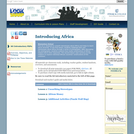
Stereotyping is a form of systemic racism for Asian Americans, who have historically been stereotyped in the United States through “Yellow Peril” fearmongering—economic and societal threats. Viewed as perpetual foreigners, no matter their duration living here or whether they were American-born, Asian males are often characterized as scheming, weak, ignorant, and undesirable, while Asian females are exotic, cunning, and subservient. This perpetual foreigner stereotype is maintained by institutions from Hollywood, private and public sectors to elected public servants. Asian Americans have been fighting against stereotypes since the 1920s, and continue to do so, on- and off-screen.
2021 Social Science Standards Integrated with Ethnic Studies:
Civics and Government: 6.4, 7.5
Historical Knowledge: 6.20, 6.21, 8.25, 8.27, HS.63, HS.64, HS.65
Historical Thinking: 7.25, 8.32
Social Science Analysis: 6.26, 6.27, 7.29, 8.34, HS.71, HS.73, HS.74
- Subject:
- English Language Arts
- History
- U.S. History
- Material Type:
- Lesson Plan
- Author:
- The Asian American Education Project
- Date Added:
- 02/01/2023














